Chronic peptic ulcer of the duodenum. Treatment of peptic ulcer. Prevention of duodenal ulcer
An ulcer is a disease that causes ulcerative damage to the gastric mucosa. It refers to chronic diseases.
People of all ages suffer from ulcers, but in most cases at risk are between the ages of 20 and 50 years. Exacerbations are observed in spring and autumn.
There are several types of ulcers. Treatment of stomach ulcers and twelve duodenal ulcer should be done in a timely manner.
The first signs of a stomach ulcer and duodenum are manifested in this way: the appearance of acute pain in the stomach, which can radiate to the lumbar region.
If there is a stomach ulcer, painful sensations occur in most cases after eating, and with a duodenal ulcer, they appear on an empty stomach or at night.
Sometimes there is additional nausea, vomiting or heartburn. Very often, with this disease, a person experiences constipation.
In the presence of gastric and duodenal ulcers, bleeding and black stools may occur.
There are also so-called "silent" ulcers. It passes in most cases with certain symptoms and is detected at a much later date, when bleeding occurs.
Symptoms of gastric and duodenal ulcers are the same for all patients. This is constant intense pain in the stomach. They can disturb the patient for a very long time.
Exacerbations occur in the spring-autumn period. Ulcer pain is caused by stomach cramps and irritation of the stomach wall that has ulcers.
They can be of different intensity, depending on the duration of the disease and the degree of damage to the organ.
Causes of stomach ulcers
The most important role in the occurrence of gastric and duodenal ulcers is played by stressful situations.
It is they that contribute to a decrease in the protective properties of the body, circulatory disorders and spasms in the work of the organs of the gastrointestinal tract.
Improper nutrition leads to the fact that hydrochloric acid does not eliminate bacteria from food, but begins to damage the walls of its own stomach.
That is a problem at work. internal organs is that the gastric juice begins to have an adverse effect and there is a balance between the factors of aggression and the protective properties of the stomach.
Other causes that lead to stomach or duodenal ulcers are:
- Having bad habits.
- Chronic diseases of the gastrointestinal tract. For example, cholecystitis, pancreatitis, gastritis, duodenitis.
- Wrong nutrition.
- If a person has been taking medication for a long time. Especially if they are blood thinners. A stomach ulcer may occur due to side effects from taking pills.
- Heredity.
- The presence of the bacterium Helicobacter pylori. Nine out of ten people suffer from duodenal ulcers for this reason.
In medicine, there is such a diagnosis as symptomatic peptic ulcers.
They appear as a result of stressful situations, disruption of the nervous system, cirrhosis of the liver, burns, kidney failure. This disease is very rare.
Diagnostics
by the most effective method in order to carry out the diagnosis - fibrogastroduodenoscopy.
With the help of a visual examination of the gastric mucosa, you can determine the presence of a stomach ulcer, as well as take a scraping from the mucous membrane for the presence of benign or malignant tumors.
It is necessary to donate blood for the presence of the Helicobacter pylori bacteria, the level of hemoglobin and leukocytes. Also, diagnosis consists in determining the level of acidity of gastric juice.
Only then can the doctor determine the necessary treatment.
Treatment
In order to treat gastric and duodenal ulcers, it is necessary to take medications, take folk methods and follow a diet.
Drug therapy may consist of the following drugs:
- Medications that are proton pump blockers. They are necessary to normalize the acidity of gastric juice. For example, Omeprazole, Lansoprazole.
- Medications needed to protect the mucous membrane. It can be Pentoxyl, Gastrofarm or sea buckthorn oil.
- Drugs that contribute to the normalization of gastric juice for internal use: Famotidine, Ranitidine.
- Drugs that reduce the secretion of hydrochloric acid for external use: Phosphalugel, Maalox, Almagel.
- Additionally, it is recommended to use antidepressants to eliminate problems with nervous system and consequences of stress.
After acute symptoms been eliminated, it is necessary to destroy the bacteria Helicobacter pylori.
Rehabilitation therapy takes place in three phases:
- Microbial killer: Metronidazole.
- Antibiotics: Clatriromycin, Amoxicillin.
- Medicines based on Bismuth. For example, Vis-Nol.
It is necessary to take drugs in a course lasting 2 weeks. But it is necessary to take yogurt or special bacteria when taking antibiotics to normalize the work of the gastrointestinal tract.
Stomach and duodenal ulcers can be healed with medicines. But it is very important not only to take drugs, but also to give up bad habits.
You can not drink coffee, very hot or cold food, alcoholic beverages, and also try to eliminate stress from your life.
If the disease is not treated at the right time, then deterioration in health status is possible.
For example, stenosis of the stomach or duodenum, bleeding, the formation of an ulcer at the site, first a benign, and then a malignant tumor.
If for a long time the symptoms of the presence of a stomach ulcer and duodenal ulcer are not eliminated with the help of medications, or the process is even aggravated, then there may be a need for a hospital.
It is treatment under the supervision of a doctor or the use of surgery to remove the area of \u200b\u200bthe stomach or duodenum that has been affected.
After the operation was done, it is necessary to take antiulcer drugs for a long time. The patient is discharged on the 5th day if there are no complications.
Approximately the same time he observes bed rest within the framework of the house. Rapid recovery after surgery is possible if a person follows a diet.
It must be followed for two months. At this time, it is recommended not to abuse salt, plenty of fluids and quickly digestible carbohydrates.
On the second and third days after the operation to eliminate gastric and duodenal ulcers, it is necessary to take non-carbonated mineral water and weak green tea.
Upon arrival home, a person can use a rosehip broth, eat 1 boiled egg, as well as buckwheat porridge or boiled vegetables.
After a while, you need to eat cutlets from lean meat or steamed fish.
Bread is allowed to be consumed no earlier than a month after the operation. At first, it is forbidden to use honey, coffee, cocoa, ice cream.
Dishes that are not suitable for consumption cannot be prepared from: spinach, mushrooms, onions, cabbage, garlic, radishes.
During the period of exacerbation of the disease, it is necessary to take the treatment of a person in a hospital. Treatment is prescribed for 2-3 weeks, during this time it is necessary to avoid physical exercise and various nervous shocks.
It is necessary to take food in small quantities several times a day. Additionally, you can apply mud therapy, reflexology, UHF therapy and treatment with paraffin applications.
In acute pain, it is necessary to take drugs to eliminate spasms.
Treatment with folk remedies
Gastric and duodenal ulcer requires special attention. It is necessary to cure it completely, and not just eliminate the symptoms.
To do this, it is desirable to use not only medicines, but also methods traditional medicine. They do not have side effects and help to eliminate the first signs of the disease.
- It is necessary to take a glass of propolis and insist on half a glass of pure alcohol (you can replace it with vodka). It is desirable to withstand the tincture for 72 hours. It is recommended to consume 20 drops before each meal.
- Very effective tool is the use of a decoction of common yarrow. It is necessary to take 50 grams of grass and pour 200 grams of hot boiled water. It is advisable to put in a dark place and leave to infuse for 60 minutes. It is desirable to consume 100 grams before meals. This decoction must be taken to eliminate the symptoms if there is an ulcer.
- It is necessary to combine onions and water. Drink half an hour before eating food with an ulcer.
- Combine 500 grams of butter and the same amount of honey. Both ingredients must be in a liquid state. Separately, it is necessary to grind a glass of partitions from walnuts with a blender. It is desirable to use the resulting mixture on an empty stomach.
- To prevent the occurrence of ulcers, it is necessary to consume aloe leaves half an hour before meals. A piece of leaf must be chewed well, swallowed aloe juice, and spit out the walls of the leaf. The course must be carried out for 3 months or to eliminate the symptoms.
- You need to take potato tubers and use a blender to turn into gruel. Treatment occurs through the use of juice. It should be taken before breakfast and lunch.
- Flax seeds are very good for the work of the gastrointestinal tract. They can be purchased at a pharmacy or supermarket. They help to eliminate symptoms, anesthetize and gently envelop the walls of the stomach.
Diet for ulcers
What foods can be eaten with an ulcer? For example, you can consume no more than 2 boiled eggs per day. They can be steamed and used for cooking other dishes.
You can cook dishes from cereals and pasta. It can be cereals, mashed potatoes, puddings. They can be steamed or simply cooked in water.
From sweets, it is desirable to give preference to ripe berries and fruits, but not sour ones. They can be consumed in any form, baked, steamed or raw.
Dairy products can also be taken. Grind cottage cheese with a blender until smooth. From drinks, the use of tea with milk or sweet juices is suitable.
You can enrich the body with a large number of trace elements with the help of a decoction of wild rose.
Completely eliminate the following foods:
- Fatty meats. Smoked products.
- Smoked or canned fish.
- From vegetables, you can not eat white cabbage, mushrooms, radish, sorrel, cucumbers.
- Tomato, fish, meat, mushroom sauces. It is also necessary to limit the amount of consumption of horseradish, pepper and mustard.
- You can not categorically consume carbonated drinks, black kvass or coffee.
- Eating fresh bread, especially white. Also, don't eat baked goods.
The modern rhythm of life is such that sometimes it does not allow us to eat properly and on time. Frequent snacking, dry food, and the abuse of fast foods lead to the fact that almost half of the adult population suffers from diseases of the gastrointestinal tract.
What can we say about adults, when the children's departments of hospitals are full of small patients who are treated for gastritis, ulcers and other pathologies. Therefore, it is probably not surprising that for most, the symptoms of duodenal ulcers are quite familiar.
Peptic ulcer - what is it?
An ulcer is a lesion of the mucous membranes of internal organs. If we are talking about the stomach or duodenum, then pathological changes can be seen in them. The widest part of the digestive system contains a strong acid - hydrochloric acid, which helps to neutralize bacteria that enter with food. It also activates the enzymes of the gastric juice.
The mucous membrane on the inner walls of the stomach protects it from the corrosive action of acid. If for some reason this layer is broken, the acid begins to contact the tissues, irritate them and gradually leads to the appearance of ulcers. This is how a stomach ulcer is formed. We will try to analyze the symptoms, treatment in our article.
Causes of diseases of the intestinal tract
If we talk about the reasons that can provoke the development of these diseases, we can name the following:
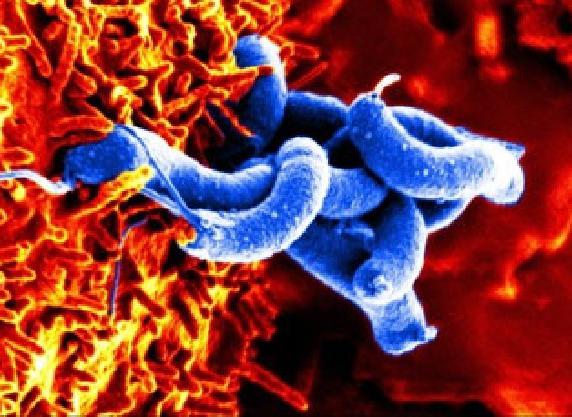
Many doctors are of the opinion that our stressful life is also the culprit of the fact that we often begin to worry about the symptoms of stomach and duodenal ulcers. Some diseases of the internal organs can also provoke the development peptic ulcer eg cholecystitis, pancreatitis, cholelithiasis.
Signs of the disease
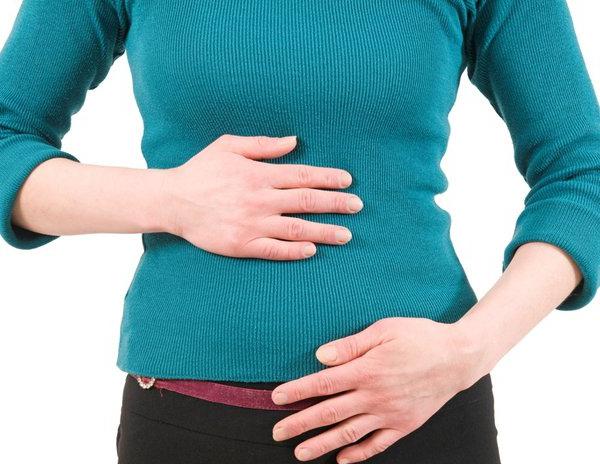
The symptoms of a stomach ulcer and 12 duodenal ulcer are slightly different, so they should be discussed separately. For damage to the gastric mucosa, the following symptoms are characteristic:
- Constant pain just above the navel.
- The pain disappears or becomes significantly weaker if taken which envelop the walls of the stomach and do not allow them to come into contact with hydrochloric acid.
- Weight loss.
- May decrease appetite.
- After eating, there may be a feeling of nausea, and sometimes vomiting.
- Blood clots can be seen in the vomit.
- The stool changes color and becomes darker, sometimes even with an admixture of blood.
Duodenal ulcer symptoms are as follows:
- Frequent heartburn.
- Acute which often overtakes a person at night. After eating, it passes or becomes weaker.
- Nausea and frequent vomiting.
- Constipation, especially during an exacerbation.
What is surprising is that these diseases have periods of exacerbation and remission. When the ulcer subsides, the person feels quite comfortable, even if he makes mistakes in nutrition.
Diagnosis of the disease
If you have a question about how to cure a stomach ulcer, then first you need to make a correct diagnosis, because many diseases can have similar symptoms. First of all, the doctor will talk to you and examine you. After that, he will take an interest in your well-being.
Recently, more and more often you can hear that the bacterial cells of Helicobacter pylori are blamed for the development of peptic ulcer. Detecting their presence is quite simple - you just need to do a blood or stool test.
If you are sure that you urgently need treatment for a stomach ulcer. The doctor will be able to prescribe you drugs only after an endoscopic examination. Currently, this method is considered the most accurate in making such a diagnosis. 
The procedure is not pleasant, but it will give an accurate answer to all questions about whether you have an ulcer, whether there are other changes. If a duodenal ulcer is diagnosed, the treatment will be slightly different from that of a peptic ulcer.
During endoscopy, you can even take a piece of tissue for analysis if there is a suspicion of cancer.
Treatment
If you ask a doctor how to cure a stomach ulcer, then a competent specialist will always tell you that the treatment consists of several components:
- Taking antibiotics, especially if bacteria are found to be the cause.
- Medicines that will reduce the acidity of gastric juice.
- If treatment of a stomach ulcer begins, drugs should be taken and enveloping action.
- Following a strict diet.
- Daily regime.
- Stop drinking alcohol and smoking.
There are times when the disease is neglected or complications arise, then you have to resort to surgical intervention.
Features of the treatment of peptic ulcer
Treatments for stomach ulcers may differ depending on the cause that provoked it:
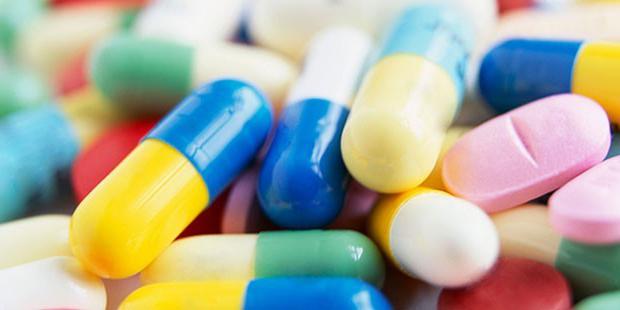
The effectiveness of therapy can be determined by tests and repeated endoscopy.
Factors contributing to the development of an ulcer
There are some factors that can contribute to the development of peptic ulcer. Many doctors believe that the body's own defenses play an important role in preventing disease. These protective mechanisms include mucous membranes, which are the first barrier:
- Mucin.
- Bicarbonates.
- Back diffusion of hydrogen protons.
- Blood supply.
In case of disruption of work, negative factors have a stronger effect on the body.
Traditional medicine in the treatment of ulcers
If you have a duodenal ulcer, folk remedies quite capable of helping you. The most effective are:
- Celandine.
- Sea buckthorn oil.
There are also many recipes for treating ulcers with herbs. The following fees are considered the most famous and effective:

Can be listed for a long time folk recipes which will help you get rid of diseases of the stomach and intestines.
Diet for duodenal ulcer
In the treatment of diseases of the gastrointestinal tract, a strict diet cannot be dispensed with. The main recommendations in this regard include:
- Reduce the consumption of meat and protein products, as they increase the acidity of gastric juice.
- During periods of exacerbation, food should be warm and pureed, such as cereals, soup, potatoes.
- It is better to eat more often, but in small portions.
- Eliminate coffee, hot sauces, smoked foods, fatty meats from your diet.
- Vegetables should be used only in boiled form.
- You can not eat sour fruits, such as apples, oranges. You can eat bananas.
- It is useful to take vitamin fruit juices, only with pulp.
Complications of the disease
If time does not start treatment, then peptic ulcer can cause complications. The most common is bleeding. It is quite difficult to determine internal bleeding, but there are some signs that may indirectly indicate them:
- Nausea.
- The head is spinning.
- "Flies" before the eyes.
- Weakness.
- Tachycardia.
- Dry mouth.
Dangerous and severe complications include a perforated ulcer, or perforation, as doctors call it. In this case, a through hole appears in the wall of the stomach or duodenum, through which their contents enter the abdominal cavity. 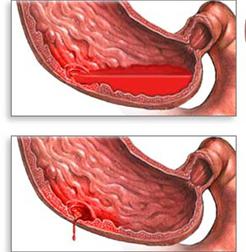
What can be observed in patients:
- Violent sharp pains in the upper abdomen.
- It becomes like a stone.
- Pain gradually spread to the entire abdomen.
- Vomiting may occur.
If a person is not provided with urgent assistance, most often surgical, then this can end badly. If a peptic ulcer is not treated, then over time the ulcers heal a little, a scar appears. This leads to disruption of the stomach or intestines, food stagnates, as the lumen narrows.
You should not risk your health, if you experience frequent stomach pains, you should consult a doctor. Although we got acquainted with the symptoms of a stomach ulcer, the doctor should still prescribe treatment.
Prevention of peptic ulcer
Any disease is easier to prevent than to spend time, effort and money on its treatment. Of course, in our time it is quite difficult to constantly eat right, follow all the recommendations on the daily routine. Sometimes we, adults, ourselves teach our children to malnutrition when we buy them chips, crackers, instead of pampering them with natural juices or fruits.
In order to prevent the disease, it is necessary:
- Stick to the diet.
- Try to eat less smoked and fatty foods.
- Do not abuse fast food.
- Minimize the consumption of carbonated drinks.
- Get rid of bad habits (smoking and drinking alcohol).
- Try to avoid stress, if this cannot be done, then do not take everything to heart.
Only in this case, peptic ulcer will not bother you. Take care of yourself and be healthy.
Peptic ulcer of the 12th duodenal ulcer- a disease of the duodenum of a chronic relapsing nature, accompanied by the formation of a defect in its mucous membrane and the tissues located under it. Manifested by severe pain in the left epigastric region, occurring 3-4 hours after eating, bouts of "hungry" and "night" pain, heartburn, acid belching, often vomiting. The most formidable complications are bleeding, perforation of the ulcer and its malignant degeneration.
Reasons for development
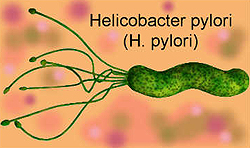 The modern theory of the development of peptic ulcer considers an infectious lesion of the stomach and duodenum by Helicobacter pylori bacteria as a key factor in its occurrence. This bacterial culture is sown at bacteriological examination gastric contents in 95% of patients with duodenal ulcer and in 87% of patients suffering from gastric ulcer.
The modern theory of the development of peptic ulcer considers an infectious lesion of the stomach and duodenum by Helicobacter pylori bacteria as a key factor in its occurrence. This bacterial culture is sown at bacteriological examination gastric contents in 95% of patients with duodenal ulcer and in 87% of patients suffering from gastric ulcer.
However, infection with Helicobacter pylori does not always lead to the development of the disease, in most cases there is an asymptomatic carriage.
Factors contributing to the development of duodenal ulcer:
- alimentary disorders - improper, irregular nutrition;
- frequent stress;
- increased secretion of gastric juice and reduced activity of gastroprotective factors (gastric mucoproteins and bicarbonates);
- smoking, especially on an empty stomach;
- long-term use of drugs that have an ulcerogenic (ulcerogenic) effect (most often these are drugs from the group of non-steroidal anti-inflammatory drugs - analgin, aspirin, diclofenac, etc.);
- gastrin-producing tumor (gastrinoma).
Duodenal ulcers resulting from ingestion medicines or concomitant gastrinoma, are symptomatic and are not included in the concept of peptic ulcer.
Classification of peptic ulcer
Peptic ulcer differs in localization:
- Peptic ulcer of the stomach (cardia, subcardiac department, body of the stomach);
- peptic post-resection ulcer of the pyloric canal (anterior, posterior wall, lesser or greater curvature);
- duodenal ulcer (bulbous and postbulbar);
- ulcer of unspecified localization.
According to the clinical form, acute (for the first time detected) and chronic peptic ulcer are distinguished. According to the phase, periods of remission, exacerbation (relapse) and incomplete remission or fading exacerbation are distinguished. Peptic ulcer can proceed latently (without a pronounced clinic), mild (with rare relapses), moderately severe (1-2 exacerbations during the year) and severe (with regular exacerbations up to 3 or more times a year).
The duodenal ulcer itself is distinguished by the morphological picture: acute or chronic ulcer, small (up to half a centimeter), medium (up to a centimeter), large (from one to three centimeters) and giant (more than three centimeters) in size. Stages of ulcer development: active, scarring, "red" scar and "white" scar. With concomitant functional disorders of the gastroduodenal system, their nature is also noted: violations of motor, evacuation or secretory function.
Symptoms of duodenal ulcer
In children and the elderly, the course of peptic ulcer is sometimes almost asymptomatic or with minor manifestations. Such a course is fraught with the development of severe complications, such as perforation of the duodenal wall with subsequent peritonitis, occult bleeding and anemia. Typical clinical picture duodenal ulcer is a characteristic pain syndrome.
The pain is usually mild and dull. The severity of pain depends on the severity of the disease. Localization, as a rule, from the epigastrium, under the sternum. Sometimes the pain can be diffused in the upper half of the abdomen. Occurs often at night (1-2 hours) and after long periods without food, when the stomach is empty. After eating, milk, antacids, relief comes. But most often the pain resumes after the evacuation of the contents of the stomach.
Pain may occur several times a day for several days (weeks), after which it will pass on its own. However, over time, without proper therapy, relapses become more frequent, and the intensity of the pain syndrome increases. Seasonality of relapses is characteristic: exacerbations often occur in spring and autumn.
Complications of duodenal ulcer
The main complications of duodenal ulcer are penetration, perforation, bleeding and narrowing of the intestinal lumen. Ulcerative bleeding occurs when the pathological process affects the vessels of the gastric wall. Bleeding can be hidden and manifest only with increasing anemia, or it can be pronounced, blood can be found in vomiting and appear during bowel movements (black or blood-streaked feces). In some cases, bleeding can be stopped during endoscopic examination, when the source of bleeding can sometimes be cauterized. If the ulcer is deep and the bleeding is profuse, surgical treatment is prescribed, in other cases they are treated conservatively, correcting iron deficiency. With ulcerative bleeding, patients are prescribed strict hunger, parenteral nutrition.
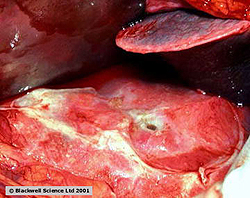 Perforation of the duodenal ulcer (usually the anterior wall) leads to the penetration of its contents into the abdominal cavity and inflammation of the peritoneum - peritonitis. When the intestinal wall is perforated, a sharp cutting-stabbing pain in the epigastrium usually occurs, which quickly becomes diffuse, intensifies with a change in body position, deep breathing. Symptoms of peritoneal irritation (Shchetkin-Blumberg) are determined - when pressing on the abdominal wall, and then abruptly releasing the pain intensifies. Peritonitis is accompanied by hyperthermia.
Perforation of the duodenal ulcer (usually the anterior wall) leads to the penetration of its contents into the abdominal cavity and inflammation of the peritoneum - peritonitis. When the intestinal wall is perforated, a sharp cutting-stabbing pain in the epigastrium usually occurs, which quickly becomes diffuse, intensifies with a change in body position, deep breathing. Symptoms of peritoneal irritation (Shchetkin-Blumberg) are determined - when pressing on the abdominal wall, and then abruptly releasing the pain intensifies. Peritonitis is accompanied by hyperthermia.
This is an emergency condition that, without proper medical care leading to shock and death. Perforation of the ulcer is an indication for urgent surgical intervention.
Ulcer penetration is a deep defect that affects the intestinal wall with penetration into adjacent organs (liver or pancreas). It is manifested by intense pain of a stabbing nature, which can be localized in the right or left hypochondrium, radiate to the back, depending on the location of the penetration. When the position changes, the pain intensifies. Treatment, depending on the severity, is conservative, or - in the absence of a result - surgical.
When x-ray examination with a contrast agent, duodenal ulcer manifests itself as a wall defect (barium mixture penetrates into the ulcer and this can be seen on the x-ray), intestinal stenosis, perforation and penetration of ulcers are detected. To detect infection with Helicobacter pylori, PCR diagnostics and a urease breath test are used. In a laboratory blood test, signs of anemia can be detected, which indicates the presence of internal bleeding. Fecal masses are also examined for occult blood.
Treatment of duodenal ulcer
Treatment of a duodenal ulcer is carried out strictly according to the prescription of a gastroenterologist, self-medication is unacceptable due to the fact that self-administration of drugs that help get rid of pain leads to subsidence of symptoms and latent development of the disease, which threatens with complications. Drug therapy for duodenal ulcer includes measures to eradicate Helicobacter and heal ulcers (which is facilitated by a decrease in the acidity of gastric juice).
To suppress Helicobacter pylori infection, broad-spectrum antibiotics (metronidazole, amoxicillin, clarithromycin) are used, antibiotic therapy is carried out for 10-14 days. To reduce the secretory activity of the stomach, the optimal drugs are proton pump inhibitors - omeprazole, esomeprazole, lansoprazole, rabeprazole. For the same purpose, drugs that block H2-histamine receptors of the gastric mucosa are used: ranitidine, famotidine. Antacids are used as agents that reduce the acidity of gastric contents. Gel antacids with anesthetics are also effective as symptomatic drugs - they relieve pain by enveloping the intestinal wall. To protect the mucosa, gastroprotective agents are used: sucralfate, bismuth preparations, misoprostol.
If conservative treatment fails or if dangerous complications resort to surgical treatment. The operation consists in excision or suturing of the duodenal ulcer. If necessary, to reduce secretion, vagotomy is performed.
Prevention and prognosis of duodenal ulcer
Measures to prevent the development of duodenal ulcer:
- timely detection and treatment of Helicobacter pylori infection;
- normalization of the mode and nature of nutrition;
- quitting smoking and alcohol abuse;
- control over the drugs taken;
- harmonious psychological environment, avoidance of stressful situations.
Uncomplicated peptic ulcer disease, with proper treatment and adherence to dietary and lifestyle recommendations, has a favorable prognosis, with high-quality eradication, ulcer healing and cure. The development of complications in peptic ulcer worsens the course and can lead to life-threatening conditions.
The causes, symptoms and types of duodenal ulcers are interconnected, so they should be considered and studied in a complex manner.
Etiological factors
Symptoms of a duodenal ulcer become noticeable immediately after the appearance of the defect. Early diagnosis contributes to the full and rapid restoration of the integrity of the mucous membrane, so it is necessary to carefully study the signs of the disease.
Mechanisms of occurrence of a pathological condition
There are two types of mechanisms for the development of duodenal ulcers:
- The gastric secret has an aggressive environment, since it needs to dissolve the food that has entered the stomach. In the presence of a healthy mucous membrane, the duodenum is protected from the negative effects of gastric juice. But, if the body's defenses are weakened, or the acidity of the gastric juice is increased, when the contents of the stomach enter the initial section small intestine contributes to the occurrence of inflammation on the mucous membranes. Gradually, the formation of a duodenal ulcer occurs.
- When an infectious agent enters the body Helicobacter pylori, pathogenic bacteria begin to multiply and secrete harmful products vital activity that contribute to the death of cells of the duodenal mucosa. In addition, Helicobacter bacteria increase the acidity of gastric juice and promote the release of ammonia. Over time, an ulcerative defect is formed at the site of localization of the infectious focus.
In addition to the two main mechanisms for the development of the disease, there are many risk factors that can become an indirect cause of ulceration of the mucous lining of the duodenum.
Risk factors contributing to the development of a peptic ulcer
Indirect causes of duodenal ulcers are divided into two groups: the first group leads to an increase in the acidity of gastric secretions, and the second destroys healthy cells of the duodenal mucosa, regardless of what degree of acidity prevails in the stomach cavity.
The first risk group:
ADVICE! Get rid of dark circles around the eyes in 2 weeks.
- alcoholic drinks;
- regular smoking;
- daily use of strong coffee on an empty stomach;
- chronic gastritis in the advanced stage;
- abuse of foods that increase the acidity of gastric juice (salty and spicy foods, smoked meats, canned food, etc.);
- adherence to a strict diet for a long time;
- regular psychological stress;
- hereditary predisposition to peptic ulcer and to increased production of gastric juice.
Second group:
- the introduction of a bacterial infection of Helicobacter pylori into the body (most often through the saliva of a person - the carrier of the infection);
- prolonged or frequent passage drug treatment non-steroidal anti-inflammatory drugs and glucocorticoids.
A warning! If you have relatives suffering from duodenal ulcers, you should be very careful about your diet, lifestyle and possible indications duodenal ulcers, as you may be predisposed to this disease.
Symptomatic manifestations of a peptic ulcer
An ulcer can be in two states: in the stage of exacerbation or the stage of remission. During the period of remission, the signs of the disease disappear partially or completely. And in spring and autumn they appear in full.
TREAT THE CAUSE, NOT THE EFFECT! Remedy from natural ingredients Nutricomplex restores the correct metabolism in 1 month.
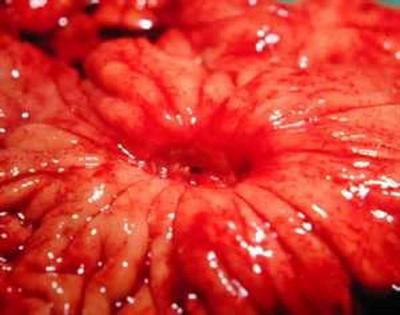
Duodenal ulcer
First sign of exacerbation- Pain in duodenal ulcer. It can be cutting, stabbing and radiate to the back or to the area under the paw of the sternum. Pain occurs after eating, after one to two hours. Food, getting into the stomach, is processed with the help of gastric secretions. The acidic environment formed in the cavity of the digestive tract has a negative effect on the area of damage to the mucous lining of the duodenum and irritates pain receptors.
Night pains that torment ulcers appear when a large amount of secretion enters the duodenum. Some patients suffer from "hunger pains" after prolonged abstinence from food (with diets), which disappear as soon as the patient eats.
The second sign of exacerbation- digestive disorders. The completion of the remission stage is characterized by the appearance of a feeling of nausea, vomiting, heartburn, gas formation in the intestines and constipation. Such duodenal ulcer symptoms are the result of increased acidity and dysfunction of the digestive tract.
IMPORTANT! How to remove bags and wrinkles around the eyes at 50?
Third sign- loss of appetite due to severe pain and dyspeptic syndrome. In this state, the patient refuses to eat, becomes prone to frequent diseases and begins to lose weight rapidly.
For the prevention and treatment of diseases of the gastrointestinal tract, our readers advise Monastic tea. This is a unique remedy which includes 9 medicinal herbs useful for digestion, which not only complement, but also enhance each other's actions. Monastic tea will not only eliminate all the symptoms of the disease of the gastrointestinal tract and digestive organs, but will also permanently get rid of the cause of its occurrence.
Readers' opinions... »
A warning! It should be borne in mind that with each exacerbation, the disease worsens, the ulcer becomes deeper.
Possible complications of duodenal ulcer
Complications arise in the absence of proper treatment of the disease. All the consequences of neglect of a peptic ulcer are life-threatening. They are manifested by the development of an acute abdomen (more often, with perforation of a duodenal ulcer), which requires immediate surgical intervention.
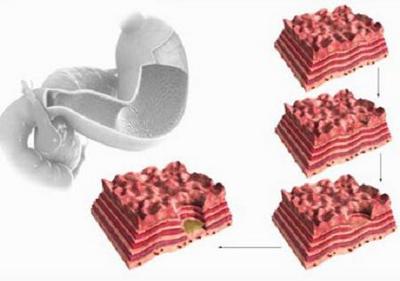
Stages of deepening of the ulcer
Types of complications:
- Bleeding from an ulcer develops when a blood vessel corrodes at the site of ulceration. Damage to arteries and veins is possible with a sufficient depth of the defect, when the deep layers of the intestinal wall are affected. A sign of bleeding from an ulcer is the appearance of streaks of blood in the stool. Such a state is called "".
- Duodenal stenosis is a relatively large scar that does not allow the food bolus processed by the stomach to pass further than the resulting stenosis. A sign of stenosis is vomiting of dense vomit after eating.
- Periduodenitis is an inflammatory process that surrounds the localization of a duodenal ulcer. Only the serous membrane of the intestine is captured.
- Penetration of the ulcer is the situation when the ulcer corrodes the wall of the duodenum and penetrates into the pancreas. This results in acute pancreatitis.
- Perforation of a duodenal ulcer is characterized by the following symptoms:
- communication with the peritoneal cavity;
- the development of peritonitis, accompanied by "dagger pain".
Peptic ulcer in the digestive pituitary gland occurs in chronic form and tends to relapse frequently. With each relapse, the possibility of complications increases.
Types of ulcers
Depending on the localization of ulcers, they are divided into several groups.
Ulcers on the posterior wall of the duodenum
This type of bowel wall defect often penetrates the pancreas or the hepatoduodenal ligament. In addition, spasmodic manifestations in the region of the sphincter of Oddi are often disturbing, gallbladder undergoes hypotonic dyskinesia.
bulb ulcer
Bulbous ulcers are mainly of concern to young people. Localization of pathology - on the anterior wall of the intestine.
Features of bulbous ulcer:
- pain after eating that occurs after eating after a couple of hours;
- feeling very hungry at night;
- localization pain in the epigastric region chest or near the navel (pain often radiates behind the sternum or back);
- vomiting occurs with a sudden onset of an exacerbation of an ulcer of the duodenal bulb.
Postbulbar ulcers
Postbulbar ulcers are called ulcers that are located distal to the duodenal bulb, that is, further from the stomach.
Such ulcers are most often detected in middle-aged men. Pain of a paroxysmal nature begins to disturb 3-4 hours after eating. Unpleasant sensations are not stopped by painkillers.
Symptoms of an exacerbation of a duodenal ulcer occur frequently and are complicated by penetration, stenosis, or bleeding. In some cases, obstructive jaundice develops, which can spread to.
Massive internal bleeding, perforation of the duodenal wall, cicatricial deformity of the organ, malignancy - all these are complications of peptic ulcer. If earlier the disease was diagnosed in older people, now it is quite often detected characteristic symptoms and in young people. So, let's look at why there is an exacerbation of peptic ulcer? What are the first signs of the disease? And what determines the choice of treatment tactics?
With peptic ulcer, a defect in the mucous and submucosal layers is formed. During the period of remission, epithelialization of the lesion site, scarring occurs. With an exacerbation of the process, new pathological foci in the form of ulcerations develop.
Scientists are inclined to believe that in most cases the cause of the disease is Helicobacter pylori.. But this does not mean that all infected people are already predicted in advance. Predisposing local factors are also of great importance. Namely:
- Acidity of gastric juice.
- The level of enzymatic activity.
- Nonspecific protective function of the mucous membrane.
Frequent use of non-steroidal anti-inflammatory drugs for therapeutic purposes increases the likelihood of a violation of the integrity of the walls of the duodenum 12.
Smoking, alcohol abuse, dry food, emotional stress, stress - all these factors contribute to the exacerbation of the pathological process.
signs
As a rule, an exacerbation of peptic ulcer occurs when the patient begins to neglect the recommendations of specialists. . The main symptom of the acute period is severe pain. If the ulcer is localized in the upper part of the intestine (in the bulb), patients indicate an unpleasant sensation in the right side of the epigastric zone.
Possible irradiation of pain in the back, in the right hypochondrium. The defect of the final section is manifested by pain in the area of the midline or in the left half of the epigastric region.
It is also important to note that the pain attack occurs more often at night or in the morning. Eating reduces the intensity of discomfort for about 3-4 hours. This is due to the fact that the presence of a food bolus in the intestinal cavity neutralizes the aggressive effect of hydrochloric acid, enzymes on ulcerated areas.
At the time of the attack, patients take a compensatory posture: the body is tilted forward, the legs bent at the knees are pressed to the stomach.
Consider what other signs, in addition to pain, are characteristic of an exacerbation of peptic ulcer.
- Nausea (especially pronounced in the morning) is an early harbinger of the disease.
- Vomiting improves the condition. This is important to consider when conducting differential diagnosis.
- Dyspeptic manifestations: heartburn, belching.
- Flatulence.
- Diarrhea.
- As a result of a spasm of the biliary tract, stagnation of bile occurs.
Along with local manifestations, with an exacerbation of peptic ulcer, the general state. Patients become lethargic, lethargic. Also, with the disease, a sharp decrease in body weight is observed.
Diagnostics
To confirm the diagnosis, along with the collection of anamnesis, an additional examination is also carried out.
A complete blood count and its biochemical study, the detection of occult blood in the feces by the Gregersen reaction are mandatory components of laboratory diagnostics in case of suspected exacerbation of peptic ulcer.
Fibrogastroduodenoscopy has maximum information content. During the procedure, through an optical probe, which is inserted into the stomach and duodenum, you can:
- Assess the condition of the mucosa.
- Identify the ulcer, determine the size, topography.
- Take a biopsy.
- Carry out a urease test for the presence of Helicobacter pylori.
If necessary, X-ray method of research is also used.
Diet
Patients in the period of exacerbation of the disease must comply with the dietary table number 4g. Experts strongly recommend:
Eat small meals every 3 hours.
Baking, steaming are the preferred methods of heat treatment.
The food temperature is 37 degrees. Do not eat hot or, conversely, cold dishes.
Before use, food should be thoroughly rubbed to avoid unwanted mechanical impact on the ulceration areas.
Preference should be given to:
- Slimy cereals, mashed potatoes, pasta, buckwheat.
- Boiled dietary meat (rabbit, turkey).
- Steamed fish (pike, pike perch).
Products are taboo:
- Rich broths.
- Spicy, fatty, fried foods.
- Spices, seasonings.
- Coffee, strong tea.
- Fruits (you can eat only bananas) and vegetables.
Treatment
To date, the treatment of exacerbation of peptic ulcer is carried out primarily using conservative methods. Only in rare cases, with the development of complications, they resort to surgical intervention.
In order to stop the acute period, the following groups of drugs are prescribed:
- Medicines to increase the protective parameters of the mucosa (De-nol, Enprostil).
- Selective blockers of M-cholinergic receptors reduce the production of hydrochloric acid, pepsin (Gastrocepin).
- To normalize intestinal motility, dopamine receptor blockers (Cerukal) are used.
- Antibiotic therapy includes Clarithromycin, Amoxicillin. In the absence of effectiveness, tetracycline, metronidazole are used.
- Means, the action of which is aimed at reducing the production of gastric juice.
- Based on omeprazole - Lomak, Crismel.
- Pantoprazole preparations - Nolpaza, Controloc.
- On the basis of lansoprazole - Lansofed, Epicurus.
- Rabeprazole preparations - Ontime, Rabelok.
Traditional medicine suggests using freshly squeezed potato juice for therapeutic purposes. Sea buckthorn oil also has good regenerative properties (taken on an empty stomach, 10 ml), honey.
Exacerbation of peptic ulcer is a great danger. Far from always a person is aware of the full scale of the impending problem, neglecting the recommendations of specialists. And this leads to frequent exacerbations, while the periods of remission, on the contrary, are reduced. . Along with the progression of scarring, the risks of developing internal bleeding, perforation and even malignancy of the ulcerated area.
DO YOU STILL THINK IT IS HARD TO HEAL YOUR STOMACH?
Judging by the fact that you are now reading these lines, victory in the fight against diseases of the gastrointestinal tract is not on your side yet ...
Have you thought about surgery yet? It is understandable, because the stomach is a very important organ, and its proper functioning is the key to health and well-being. Frequent abdominal pain, heartburn, bloating, belching, nausea, stool disturbance... All these symptoms are familiar to you firsthand.
But perhaps it is more correct to treat not the consequence, but the cause? We recommend reading the story of Elena M., how she cured her stomach...
